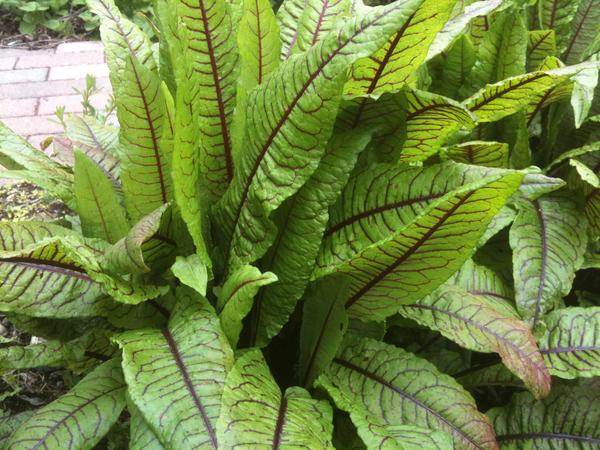With the return to popularity of cottage gardens we are seeing more gardeners integrating perennials of all kinds into their landscapes. In addition to beautiful ornamental perennials there are many edibles that make a great addition to your vegetable garden.
Unlike annuals, which complete their life cycle in a year or less, perennials are long-lived plants, many of which are “herbaceous,” meaning that during cold winter weather, they die completely to the ground, returning with new growth from the roots the following spring. Because of this some perennials are better suited to climates where they have a particular number of frost dates. It is important to check when buying perennials to see that they are recommended for your climate zone. Fortunately, many of the perennials are not particular and grow well in several climate zones.
Most perennials are quite tolerant of less-than-optimal soil conditions, but for best results they should be planted in well drained, loose, loamy soil. The general planting season for perennials is either spring or fall. Because many edible perennials take two or more seasons to begin flowering and producing it is generally better to buy more mature plants either as bear root plants dug directly from the growing fields or as container grown plants. In general perennials are not heavy feeders. Applying a balanced fertilizer in the spring to wake up the plants after overwintering is generally all that is needed for the season. Too much fertilizer can result in weaker lanky plants.
These are some common perennials to consider adding to your edible garden:
Asparagus (Asparagus officinalis) The delicious young shoots of asparagus provide an early spring harvest year after year once established. Keep in mind that Asparagus takes three years before it is ready to harvest. Some plant vendors offer one- or two-year plants to give you a head start. Most gardeners who grow this plant devote a fairly good size garden bed specifically for that purpose. Asparagus is rich in vitamins B and C and calcium and iron.

Bloody Dock (Rumex sanguineus) This plant is quite decorative in the garden. Young leaves are tender for use in salads, or they can be blanched and eaten like spinach.
Chicory (Cichorium intybus) You may be acquainted with chicory tea which produced by roasting the roots of the plant. The young leaves of chicory can be added to salads or cooked like chard and other greens.
Chives (Allium schoenoprasum) An easy to grow, long living perennial that adds an interesting “spiky” texture to the garden and a splash of purple color when in bloom.
Regular chives and garlic chives (Allium tuberosum) are snipped and added to eggs, stir fries, soups, and salads whenever and onion or garlic flavor is desired. It should be divided approximately every three years.
Egyptian Onions (Allium x proliferum) This mild-flavored, perennial onion is interesting in that it develops bulbs at the top of its slender leaves, rather than at the base like most onions.
Garden Sorrel (Rumex acetosa) There are many kinds of sorrel, and all of them are nutritious and easy to grow. The tangy tasting leaves of sorrel and zest to salads or can be used in making sorrel soup. Sorrel can be quite pervasive and spreading in the garden.
Good King Henry (Chenopodium bonus-henricus) Young flowering shoots are called “poor mans asparagus” and tender young leaves can be added to salads or cooked to season soups or stews. Gardeners seem to have varying results with the taste of this plant. It may be beneficial to experiment with different seed sources.
Jerusalem Artichoke (Helianthus tuberosus) An interesting name for a plant that is neither from Jerusalem nor an Artichoke, this plant is a perennial sunflower. The large tubers that are produced are rich in vitamins, minerals and starch and can be eaten like potatoes. The flowers are smaller but more prolific than most annual sunflowers and several plants can make a nice hedge or screen.
Rhubarb (Rheum rhabarbarum) Most of us have tasted rhubarb in holiday pies. This attractive perennial is a prolific producer that doubles as a nice display in a bed or border.
Salad Burnet (Poterium sanguisorba) Salad Burnet’s plump leaves have a slightly nutty and cucumber taste that can work well in salads.
Welsh Onions (Allium fistulosum) Welsh onions are hardy green onions, larger than chives and more onion-like in flavor. Great for using fresh in vegetable dishes, soups, stews and stir fries.
Nick Fraser is a free-lance writer and greenhouse enthusiast.
Related Articles & Free Email Newsletter Sign Up
Fool Proof Soil Preparation for Raised Bed Gardening
Garlic is a Must for the Cook’s Garden




Comment here